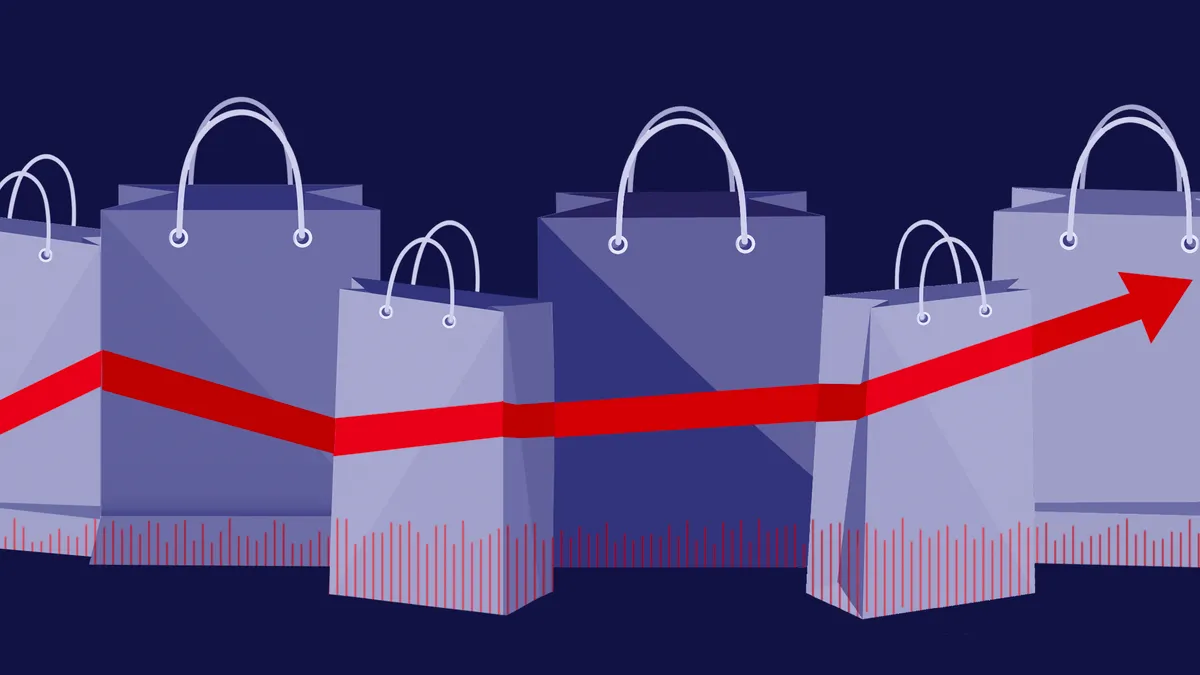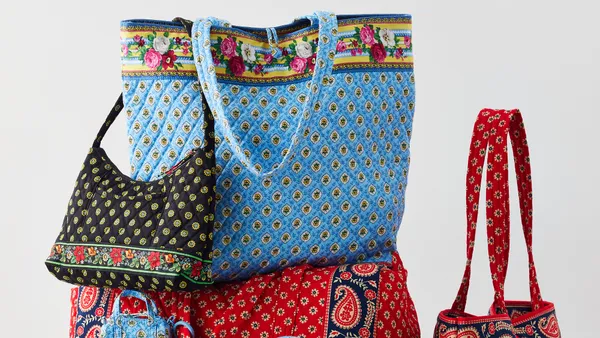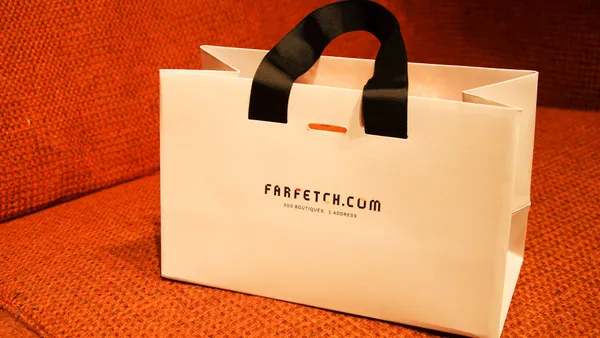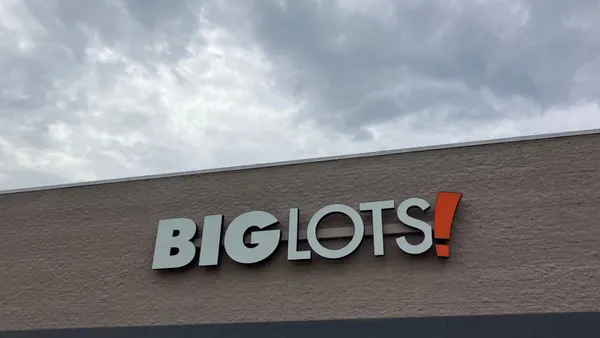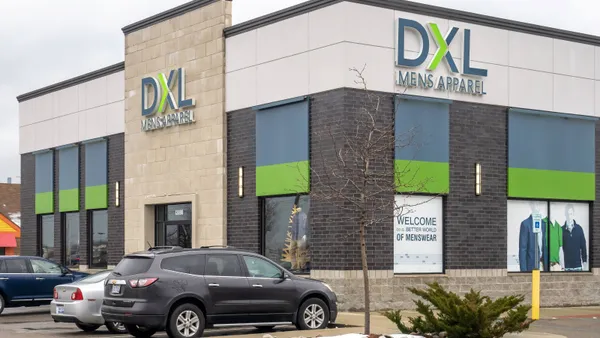Dive Brief:
-
Tapestry on Wednesday reported second quarter net sales grew 1% to $1.80 billion from $1.79 billion in the prior year. Inventory at the end of quarter rose to $732 million from $666 million in the year-ago period, mostly driven by regional distributor buyback activity over the past twelve months.
-
By banner: Coach net sales rose 2% to $1.25 billion as global comparable store sales rose 1%, including a benefit of about 100 basis points driven by an increase in global e-commerce. Kate Spade net sales fell 1% to $428 million as global comparable store sales declined 11%, including the positive impact of about 200 basis points from e-commerce. Stuart Weitzman net sales rose 3% to $124 million.
-
Net income on a reported basis for the quarter soared to $255 million from $63 million in the year-ago quarter, according to a company press release. On a non-GAAP basis, gross profit reached $1.21 billion from $1.19 billion a year ago, while gross margin edged up to 67% from 66.9%.
Dive Insight:
Tapestry stumbled during the all-important holiday period, and even its profit success was thanks more to financial advantages like low interest rates and taxes than to its own merchandise sales.
"[T]his underscores the fact that the slowdown at Tapestry is solely down to issues at the front end of the business — what it put in front of consumers was not compelling enough to drive up revenue," GlobalData Retail Managing Director Neil Saunders said in comments emailed to Retail Dive, in which he also called Coach's product line-up "lackluster" and Kate Spade's results "disappointing."
Coach suffered a reversal of fortune over the holidays, although it was a problem at home more than abroad, where the brand "is seen as ... newer and fresher," Saunders said, noting a "distinct lack of 'must have' items and bag silhouettes, and most of the assortment looked very similar to that offered earlier in the year. In a market where consumers had money to spend and were actively shopping around, such an approach was not good enough. ...[T]he range of gifting options was also poor: not nearly enough effort was put into producing holiday lines to appeal to different price points and types of consumer. Ultimately, these missteps cost Coach sales and market share."
Stuart Weitzman was the standout, after several quarters of difficulty, he also noted. "This hopefully signals an end to the various production problems the division faced in 2018."
If Tapestry is to regain its footing on its path to becoming a luxury highflier, however, a lot rests on Kate Spade, which the company acquired in 2017 for $2.4 billion and which had been delivering good results. As it has mostly successfully done with its Coach unit, Tapestry has been working to freshen up its Kate Spade merchandise in an effort to reduce promotions and attract younger, wealthier customers. "Key to any rebound here will be timing of a Kate recovery, much of which seems pinned on the new creative direction, which we note could mirror Coach’s own rocky path," William Blair analyst Dylan Carden said in a note emailed to Retail Dive.
For now, though, that remains an open question. "Overall, these numbers represent a roadblock on Tapestry's journey to becoming a much larger brand powerhouse," Saunders said. "We believe that the company has the potential to overcome such an obstacle — but only if it quickly gets back to delivering strong collections that engage and inspire customers."





